

| WARNING Fuel is flammable and explosive under certain conditions and can cause severe burns. Be prepared for fuel spillage; any spilled fuel must be completely wiped up immediately. When the fuel hose is disconnected, fuel spills out from the hose and the pipe. Cover the hose connection with a clean shop towel to prevent fuel spillage. |
For Primary Fuel Hose (Fuel Tank
 Throttle Body Assy)
Throttle Body Assy)
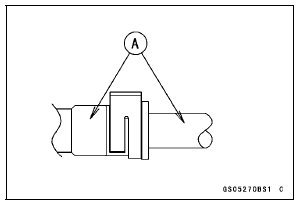
When removing with standard tip screwdriver
When removing with fingers
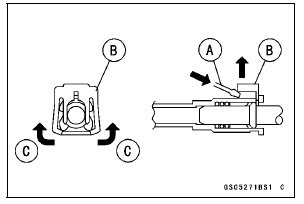
NOTICE
Prying or excessively widening the joint lock ends for fuel hose removal will permanently deform the joint lock, resulting in a loose or incomplete lock that may allow fuel to leak and create the potential for a fire explosion. To prevent fire or explosion from a damaged joint lock, do not pry or excessively widen the joint lock ends when removing the fuel hose. The joint lock has a retaining edge that locks around the housing.
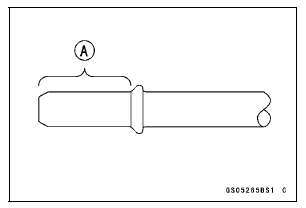
The fuel hose in Brazil model has yellow paint [B].
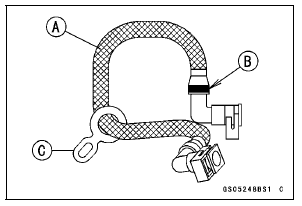
Check the yellow paint of the fuel hose in the throttle body assy side (Brazil model only).
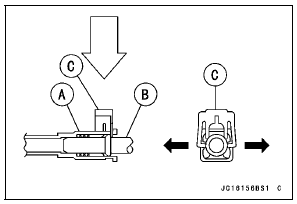
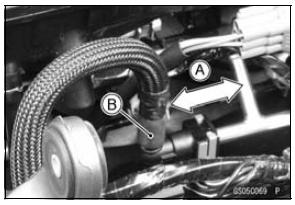
| WARNING Leaking fuel can cause a fire or explosion resulting in severe burns. Make sure the fuel hose joint is installed correctly on the delivery pipe and that it doesn’t leak. |
If it comes off, reinstall the hose joint.
For Secondary Fuel Hose (Throttle Body Assy
 Nozzle Assy)
Nozzle Assy)
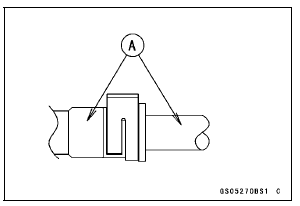
When removing with standard tip screwdriver
When removing with fingers
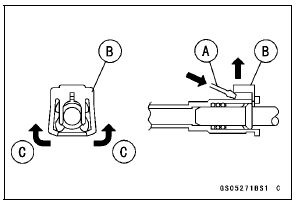
NOTICE
Prying or excessively widening the joint lock ends for fuel hose removal will permanently deform the joint lock, resulting in a loose or incomplete lock that may allow fuel to leak and create the potential for a fire explosion. To prevent fire or explosion from a damaged joint lock, do not pry or excessively widen the joint lock ends when removing the fuel hose. The joint lock has a retaining edge that locks around the housing.
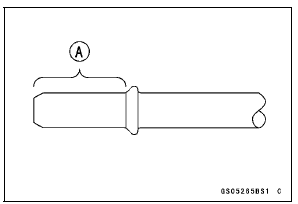
The fuel hose in Brazil model has yellow paint [B].
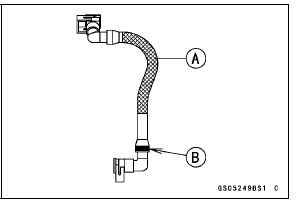
Check the yellow paint of the fuel hose in the throttle body assy side (Brazil model only).
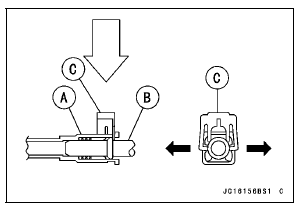
| WARNING Leaking fuel can cause a fire or explosion resulting in severe burns. Make sure the fuel hose joint is installed correctly on the delivery pipe and that it doesn’t leak. |
If it comes off, reinstall the hose joint.
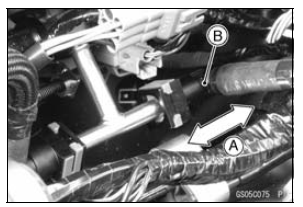
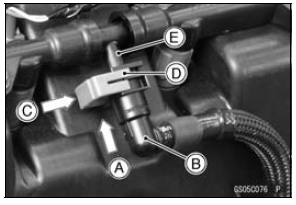
NOTICE
When inserting the fuel hose joint, do not apply strong force to the delivery pipe [E] on the nozzle assy. The pipe made from resin could be damaged.
NOTICE
When pushing and pulling the fuel hose joint, do not apply strong force to the delivery pipe [C] on the nozzle assy. The pipe made from resin could be damaged.
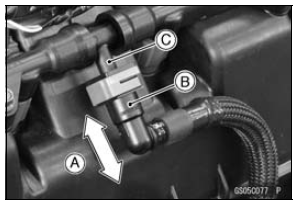
| WARNING Leaking fuel can cause a fire or explosion resulting in severe burns. Make sure the fuel hose joint is installed correctly on the delivery pipe and that it doesn’t leak. |
If it comes off, reinstall the hose joint.
 Air Cleaner Element Replacement
Air Cleaner Element Replacement Coolant Change
Coolant ChangeCheck 3-7 Stop Watch Inspection
Connect the leads in the same circuit as Check 3-2.
By pushing the upper button each time to set the stop
watch mode.
Connect the insulated auxiliary lead processed insulation
to the terminal [13] as shown in the figure, then stop watch
start to count.
While count the stop watch, conn ...
Camshaft, Camshaft Cap Wear Inspection
Remove the camshaft caps (see Camshaft Removal).
Cut the strips of plastigage (press gauge) to journal width.
Place a strip on each journal parallel to the camshaft installed
in the correct position.
Tighten the camshaft cap bolts and upper camshaft chain
guide bolts to the specified ...
Rear Caliper Holder Shaft Wear
The caliper body must slide smoothly on the caliper holder
shafts [A]. If the body does not slide smoothly, one pad will
wear more than the other, pad wear will increase, and constant
drag on the disc will raise brake and brake fluid temperature.
Check to see that the caliper holder shafts ar ...